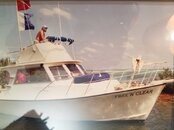Here is a site with links to all the manuals, diagrams, and parts lists to help you research the answers to your questions:
The Voltrex 2nd stage became the Abyss and is an excellent 2nd stage regulator. Mares has updated the design of the cover plate a few times, reshaped the demand lever, and possibly changed the material of the 2nd stage orifice, but other than that nothing much functional has changed over the years, it is a well unbalanced, downstream 2nd stage. You might find that shops are reluctant to work on it as service kits marked Voltrex might no longer be availablebut one should be able to use an Abyss service kit.
The diaphragm for the III and the Voltrex/Abyss have different part numbers. I have no hands-on experience with the III so I can't say whether a Voltrex/Abyss diaphragm will fit, but the clamp ring that secures the faceplate covers on both regulators is the same part number...I imagine that the diameter is the same but the front to back depth is different between the diaphragms for the two 2nd stages which would make them incompatible.
The MR12 is a solid design diaphragm 1st stage, sadly Mares discontinued it a handful of years ago. It is commonly sought after for stage bottles by tech divers, and from my understanding was commonly found in rental fleets due to work horse performance.
The MR12 uses the same 1st stage seat (poppet) as the MR22 and a whole slew of other Mares diaphram design 1st stages. They have made improvements over the years to the face material of the seat as well as the material and coatings used in the rest of this part. I believe I read somewhere awhile ago that very early versions of the Mares 1st stage seat (poppet) had issues with HP air penetrating the along the edges of where the sealing face material meets the metal surounding it, the sealing surface would become compromised and then be blown apart by the HP air in the 1st stage. That issue is long corrected and you should be able to confidently rebuild your MR12 with the current version of the Mares HP seat (poppet) without issue.
-Z




